Wildlife in Our Midst, and an Up-Close LMAC Collage #83
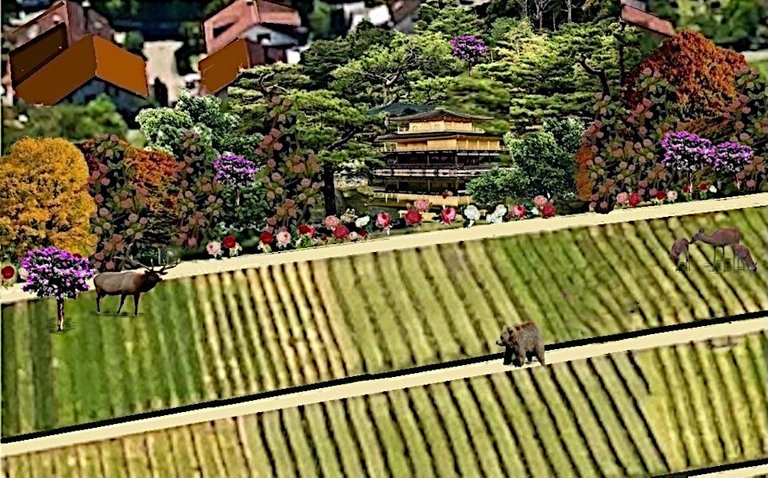
This week, @shaka's beautiful template image intrigued me in a particular way. I wondered what might be going on in that distant village. So, I took out my virtual binoculars and zeroed in on one section.
In my imagination, my collage is what I might have seen.
This Week's Template Photo by @shaka
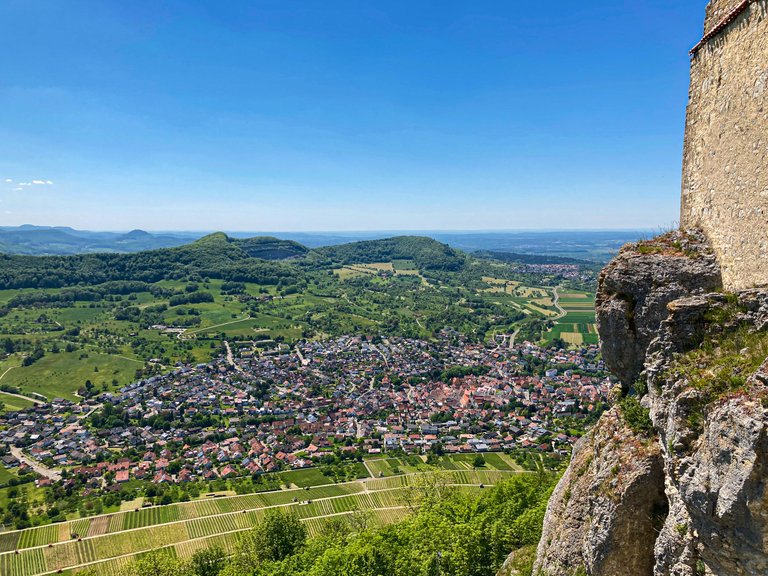

Some time ago I wrote a blog about radioactive pigs that were migrating into urban areas. Recently a number of articles have appeared in the popular press about the effects of COVID-19 on animal populations in urban centers.
This YouTube video highlights some of the perceived changes:
However, the global pandemic only accentuated a phenomenon that already existed, as human habitation encroached on areas traditionally occupied by wildlife.
Here is a 2010 picture of a moose walking down Main street in Homer, Alaska.
Image credit: Beeblebrox CC 3.0
As early as 1998, the International Journal of Circumpolar Health reported on an increasing incidence of vehicle/moose encounters in Anchorage, Alaska.

There is a technical name for the effect that human development has on wildlife: "anthropogenic pressure". While a recognition of the pressure on wildlife has been addressed with the creation of conservation areas, this has been enacted with little acknowledgment of real-life concerns. The interest in conserving nature/wildlife has often taken precedence over an interest in the the well-being of local communities.

In areas where the standard of living is low and much of the population is living at subsistence levels, a concern for wildlife may seem trivial. It is in these areas that greatest encroachment on protected areas is noted. A report by the University of Cambridge states:
"The researchers found a link between increased human encroachment on protected areas and nations with fewer roads and a lower rank on the Human Development Index."
Elephant in Assam, India
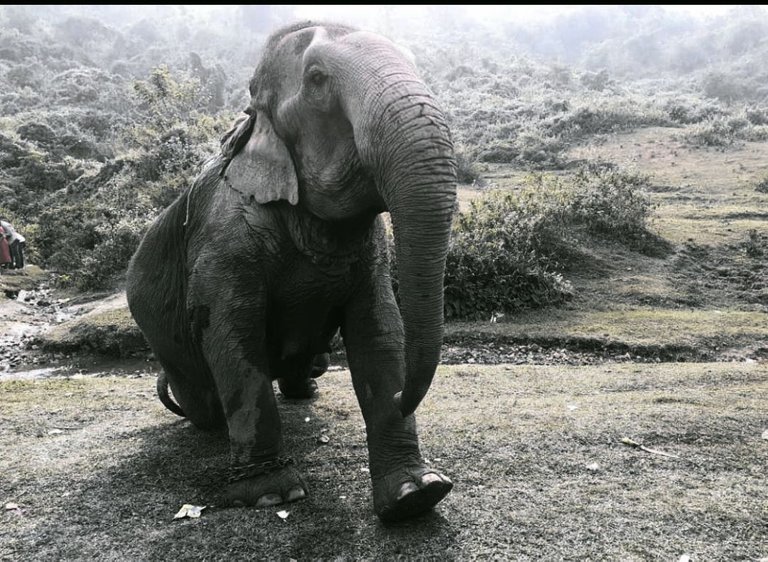
Image credit:Baby Devi 26. Used under CC 4.0 license.
The conflict between human activity and wildlife is dramatically illustrated in the Assam tea fields of India. Here it is not only large scale development, but small-scale subsistence tea agriculture that has brought the indigenous elephant and human population into deadly confrontations.
Officially, about 800 people were killed by elephants in the area between the years 2010 and 2016.

A recent well-publicized trek of elephants in China has led scientists to speculate as to the cause of this migration.
Here is a Youtube video showing the progress of the elephants across the rural and developed areas:
A Chinese forestry official, Li Zhongyuan, speculated that enforced changes in the elephants' diet prompted them to migrate from the reserve on which they had been confined. Their appetite for agriculture products had been induced by loss of tradition habitat. He suggested that the elephants were "now changing to agricultural crops like corn and sugar cane".

The current global pandemic which has taken millions of lives in the last year highlights another danger that arises from anthropogenic pressure: the emergence of zoonitic diseases.
While researchers may argue about the origins of the virus that causes COVID-19, part of the discussion revolves around cross-species transmission from a wild host. Even if this virus didn't jump the species barrier, other viruses have. An article published in Trends in Ecological Evolution discusses "emerging wildlife-borne zoonoses in urban landscapes, where anthropogenic pressures can create diverse wildlife–livestock–human interfaces."
Anopheles Mosquito
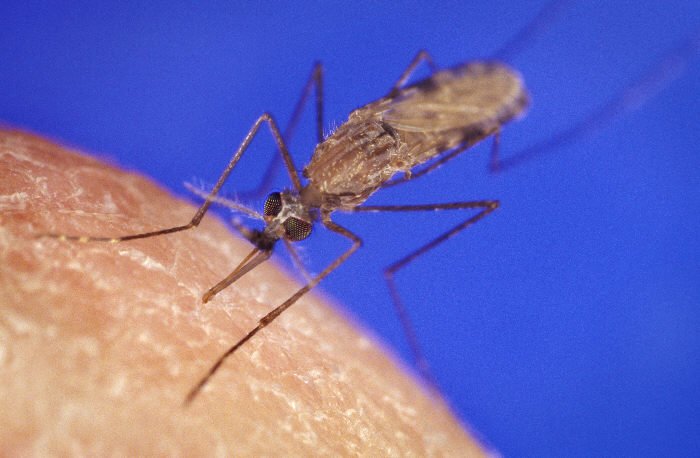
Image credit: James D. Gathany. US CDC, public domain.
When we think of human/wildlife interactions, our minds go soon to the cute moose, or rampaging elephant. Far from most of our minds is an age-old disease vector: the mosquito. Urbanization and development bring millions of people into areas where mosquitoes breed. In 2018, the Lancet published an article, "Time to Revisit How Dams Are Affecting Malaria Transmission".
Akosombo Dam, Ghana
Image credit: ZSM. Used under CC 3.0 license.
While dams are considered essential for economic growth in some areas, in Africa they have been shown to cause 1.1 million cases of malaria (at a minimum) a year. The cost in human life is born most by those communities that are closest to the dam, while the benefit is greatest to areas distant from the dam. Complicating this picture is the fact that people of limited resources often relocate close to a dam so they have greater access to water.

It is obvious that there is never a simple trade-off between development and ecological concerns. One of the elements that needs to be factored into future development/conservation is the impact on poor or subsistence populations.

I want to acknowledge the inspiration for this blog about wildlife/human interaction: @shasta posted pictures of a Mama moose and two baby moose that were walking down his driveway. I decided then to put a moose in my collage.
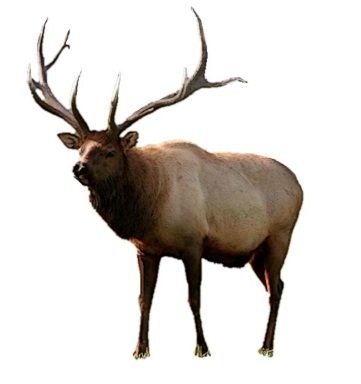
Pixabay
Although I don't compete in the LMAC contest, I do make collages, because I love the LMAC community, and the creative exercise.
Here is the small section of @shaka's picture I decided to work on:
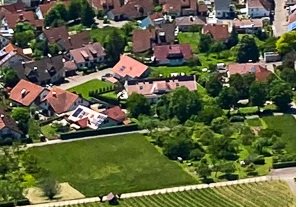
I had to forage in Pixabay to find the elements to bring my piece of the template in focus. When I enlarged the section, everything looked fuzzy. So I had to paint over (digitally) some of the buildings and other areas in order to make them more clear. Then, I added elements:
Garden and Trees
Tree
Trees
Flowers
Bear
Deer
Moose
Pagoda
Lilac trees
Thank you @shaka, for the fun, and the creative exercise. Readers who want to participate in this weekly adventure, please check out @shaka's blog for rules. We have a school, run by our talented teacher @quantumg. You may also visit our Discord channel to chat and get to know community members.
The only thing you need to participate is enthusiasm.


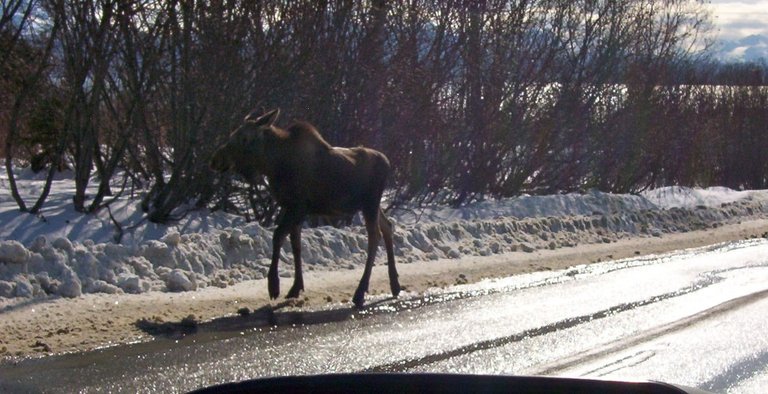
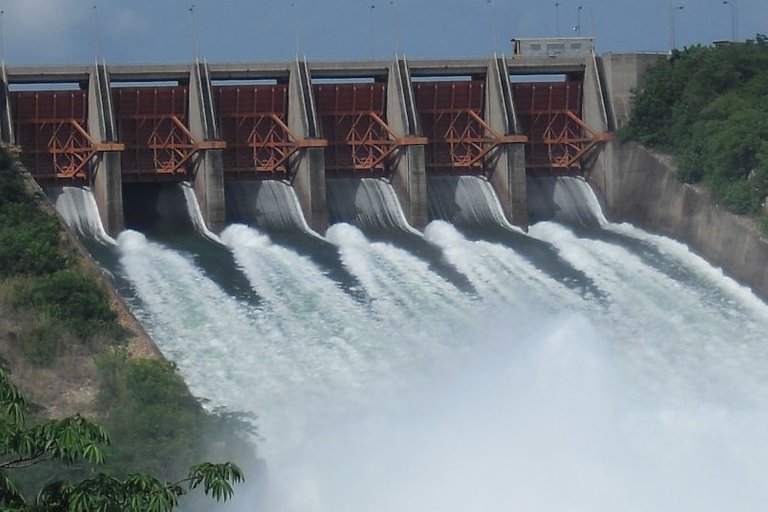
Excelente información la que nos traes está semana, está muy bien sustentada.
Thank you @kismeri. I liked looking at pictures of animals :) Have a wonderful, safe day.
Amén, Dios le bendiga!
Hello friend how are you, excellent your collage, accompanied by a reflection on your writing, related to the interaction of man and animals. I believe that the pandemic has harmed humans due to the large number of people who have died due to Covid19, but the greenhouse effect caused by man has also been reduced, which affects all animals on the planet, when humans It also invades their habitat and these animals must migrate to other spaces in search of food. Animals and the environment must be cared for in order to live better.
Thank you for reading my blog. I am grateful for your kind words. We are part of nature. When we lose sight of that we place our own existence in peril. It is always a pleasure for me to learn about animals. A peaceful place to spend some time.
I hope you and your family are well, my friend @cetb2008.
This post has a great collage and very good information. Incredibly the displacement of humans into protected areas is affecting animals and also humans by different diseases. The topic of radioactive piglets is also interesting and I stopped to read, I liked it a lot, as I like to read about these topics. Many times we are immersed in our lives and worries, many times we don't realize that our world around us is being affected by different factors. Excellent publication and greetings to you.
Thank you very much for reading my post. I'm glad you read the one about radioactive pigs. That post took a lot of work, but I learned a lot. It's great that it has found another reader.
I appreciate your kind words and your support.
Am seeing a new thing entirely.
You're creative!
Good luck in the contest.
I appreciate your visit and your comment. Making the collages and writing blogs to go with them is a hobby that brings me a lot of enjoyment. It's wonderful when others see value in it.
I don't participate in the contest, because I am on the jury. I do this for fun :)
Oookay.
I get it
Thumbs up
This is really a great post. This collage is composed not only by visuals but also with the idea behind.
I liked as well the zooming which resembles focusing a problem of modern life.
Thank you very much. I have been writing in one form or another all my life. It's only in recent years that I have complemented my writing with visuals. This is such an expanded way of expressing a concept. I am addicted. I'm glad you found my collage/blog meaningful.
Lovely work on your collage A.G. So true how humans are encroaching on animal habitat and causing an upset in the environment.
Hello my friend, @redheadpei. It was fun making this collage. I was like a child constructing a play village.
Your Amazing Nature posts, in a way deal with the nexus between animals, people and the environment. I'm glad you appreciate my brief foray into the topic.
Hope the season is treating you and your furry friends well :)
Hi A.G. I like the warmer weather but today is too hot...a heat wave 36C (96F). Mosquitoes have been out previously and maybe the heat will slow them down. It is suppose to cool down tomorrow. Lots of tree in the forest to keep the wildlife cool today.
I’m always concerned with nature and how the animals will survive. Love how you brought the problems humans are causing for the wildlife to the forefront.
Did you get your booster shot for the Covid-19? I get mine July 13.
They are giving out booster shots already? Wow. Not in the U. S. yet.
96! We've had some warm days, but not that warm (I don't think). As you know we have a few feral (they're not really feral anymore) cats and when weather gets extreme we worry about them. Put extra water out in summer.
We have an opossum that has been mooching food off the cats. Have to be careful at night. That critter is not bashful :)
Hope the hot spell passes, my friend @redheadpei.